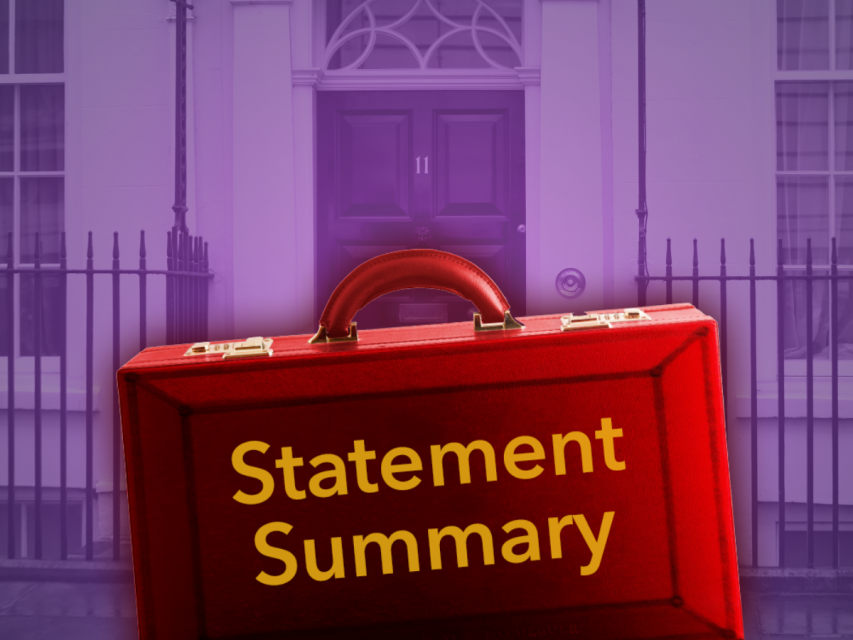For many people, a happy and fulfilling retirement is their ultimate reason for investing.
We believe one of the most effective ways to reach that goal is by investing in a pension – either through an employer’s workplace pension or a Personal Pension set up through a financial adviser or opened directly with a provider.
You can currently invest up to £60,000 per tax year into a Pension and get tax relief on your contributions from the government. For a basic rate taxpayer, if you contribute £80 your Pension provider will claim back £20, meaning a total contribution of £100 goes into your Pension pot.
In this guide, we’ll explain how to effectively manage your own Pension fund, helping you do more with your money.
Set a clear goal.
When managing your pension, you need to know what you’re aiming for. The most important thing at the outset is setting your goal: at what age do you want to retire and how big of a pension pot will you need?
To work out how to manage your Pension without running out of money, you should first plan how you’ll achieve your retirement goals. To do this, think about the age you’d like to retire, how long you envision being retired for, and the type of lifestyle you want during your golden years.
The 4% rule is a popular strategy that suggests retirees can safely withdraw the amount equal to 4% of savings in the first year of retirement and adjust that amount for inflation each subsequent year for 30 years.
Once you have a goal set, you can then proactively check whether you’re ahead or behind your target and manage your pension contributions accordingly.
Make regular contributions.
One of the most important aspects of managing your Pension plan is regularly paying into your investment. One option you could consider to potentially help reach your goals sooner would be to add any extra disposable money into your Pension. With investing, your capital is at risk.
It can be easy to put this off, especially as your retirement can seem so far away and you’d likely prefer the short-term benefits of the extra money. However, over a lifetime of compound growth, the additional cash can make a big difference if you pay more into your pension as early as possible.
With workplace pensions, the government has set minimum levels of contributions that you and/or your employer must make. The current minimum total contribution for workplace pensions is 8% for most people. This total is made up of money from your salary, money contributed by your employer, and tax relief from the government.
If you’re wondering how to fund your Pension plan yourself, consider setting up a direct debit or using a top-up feature such as impulseSave® in the True Potential app. This ensures you’re paying in regularly, helping you achieve your retirement goal sooner or retire with a bigger pot than originally envisioned.
Track your performance.
To manage your pension effectively, it’s worth regularly checking in on its performance. While a pension is for the long term and takes years to build up, it’s still useful to engage with what’s happening regularly.
Tracking performance can help you think about whether you’re in the right investment, or whether it could be worth investing some extra disposable income.
Regularly tracking performance can encourage you to consider investing, but keep in mind it’s impossible to predict the markets. Past performance is not a reliable indicator of future results. Consistent investing over the long term can help provide the foundation for building wealth.
Find and consolidate your pensions.
Throughout your career, you’ll likely have several jobs. As a result, you may end up with several Pension plans in the UK. Having multiple Pensions can be confusing and can be hard to manage when the time comes to withdraw. Pension consolidation can bring multiple pension pots together into a single pot and could be an option to consider if you have more than one Pension and would like to track them in one convenient place.
Being in one place could also offer the potential for greater growth over the long-term, as you’ll potentially be paying less in fees. Therefore, consolidating your Pensions can also be more cost-efficient, with less charges eroding your pot.
To consolidate your Pensions, start by researching different providers and working out which Pension best matches your retirement goals. Once found, simply give the details of your other Pensions to the provider to transfer in. It’s a relatively straightforward process!
However, before you look to consolidate your Pensions, it’s useful to be aware that certain Pension policies can provide valuable guarantees or low charges that could be lost if transferred.
For this reason, we would always suggest speaking to a financial adviser first, as pension consolidation is not right for everyone. You can also speak with MoneyHelper for free and impartial money and pensions guidance. You can contact them on: 0800 011 3797.
Set up your beneficiaries.
It’s important that you manage your pension’s legacy and start to think about what will happen to your wealth in the event of your death. That’s why you must name your pension beneficiaries and complete the ‘Expression of Wish’.
This is a vitally important part of your financial legacy. Your pension sits outside of your estate, meaning your beneficiary won’t normally pay any Inheritance Tax on the money inherited through your pension. This can, however, depend on the circumstances. If a pension is claimed more than two years after the pension holder’s death, tax might be payable. Any money taken out of the pension scheme before death, or any investments bought with cash from the pension scheme, will count as part of the deceased’s estate and might be subject to Inheritance Tax.
A family member could inherit your Pension, choose to stay invested, and continue to grow wealth inter-generationally.
Speak to a financial adviser.
It may be best to speak with a financial adviser, as they can help you make better decisions about managing your pension. By talking over your goals and aspirations, identifying your disposable income and managing other pension pots, you may find new ways to increase your wealth, retire earlier or reduce your tax bill.
A qualified financial adviser can also set you up with the technology and tools to better manage your pension for your retirement and, if you wish, set up your legacy for future generations.
If you don’t have a financial adviser, get in touch with our team today to find out how we can help you do more with your money.
With investing, your capital is at risk. Investments can fluctuate in value and you may get back less than you invest. This material is not a personal recommendation or financial advice and the investments referred to may not be suitable for all investors. Tax is subject to an individual’s personal circumstances. Tax rules and allowances can change at any time.
You should ensure your contribution does not result in your total Pension contribution within the tax year exceeding £60,000 or 100% of your earnings, whichever is lower. Pension eligibility and tax rules apply. This blog is not personal financial advice.





